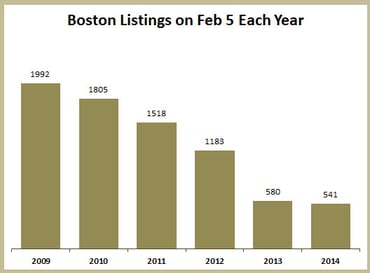Snow Be Damned! 3 Reasons Winter is the Best Time to Sell Your Home
Winter gets a bad rap as far as I’m concerned. There’s no doubt the holidays can be tough time to sell your home. Buyers have gifts and travel and family feasts on the brain. Plus it’s nearly impossible to maintain a neat and tidy home to show to prospective buyers.
But here’s why the time after the holidays in late winter (aka…right about now) may just be the BEST time of year to sell your home in 2014.
1. Serious Buyers Are Making Offers Now
While buyers may typically be on the sidelines this time of year, the past couple years have been different. Buyers who need to buy “right now” are always in the market, of course. But more so than ever, smart buyers this year are closely watching the market right now for listings to pop on market. Open houses have been very busy the past few weeks, and multiple offers are the norm. Already high demand is rapidly escalating as we’re approaching the so called “spring market”. For instance we had 68 RSVP’s for our last home buyer class in January (the highest turnout in the past 3 years in any season), and we have 50 registered guests for our February Home Buyer Class already! You can take advantage of the current demand by jumping the market and listing now.
2. Mortgage Rates are Expected to Rise
The Federal Reserve is tapering the stimulus program so mortgage rates have risen considerably since last year and are expected to rise through 2014. Higher mortgage rates directly affects affordability and the number of buyers who can afford homes at a particular price point. And affordability impacts home values. The higher rates go, the more buyers there are who are pushed into lower price points putting some downward pressure on the value of your home.
Buyers are concerned about rising rates. One of the most common questions we get at our initial buyer consults and home buying classes is how high will mortgage rates rise this year. They are telling us they would prefer to buy earlier in the year to lock in a lower long term rate. For many it makes more sense to pay a little more for a home now in a competitive bid situation to lock in a low interest rate than wait until summer or fall when rates are higher.
- For example, at 4.5% the payment on a $600,000 loan is $3,040 per month
- At $625,000 that same payment is 3,167 per month (only $127 increase).
- But as rates increase to 5.5%, the payment on a $600,000 loan becomes $3,407 per month (a $240 increase – almost double the increase compared to paying a $25K higher price!)
As a seller, you can take advantage of that competitive situation in the market and take offers from aggressive buyers looking to lock in rates in the short term.
3. There’s No Competition From Other Listings
In the past winter could be a time when listings stagnated and inventory grew higher. But not so for last year and this year as the market has come back in force. There is virtually no competition for your home on the market right now.

One of the little known facts that has a major impact on your home’s current value is the direct competition on market for your home. That gets lost in a major way in the real estate market reports using state-wide data (similar to what you see in The Boston Globe each month) or even the city-wide market reports you may read. The competition on market for your specific home is a key element to understanding the current value of your home.
Although there has been limited inventory on market all last year, right now is extremely low and provides an opportunity to take advantage of. When your home has little or no direct competition on the market, you can experience a temporary spike in value due to buyer competition. Chances are good that your home has very limited competition right now.
If you want to know what specific competition is on market for your home, just let me know and I’d be happy to run a custom report for you complete with home valuation, competitive property analysis, and local neighborhood price trends.

